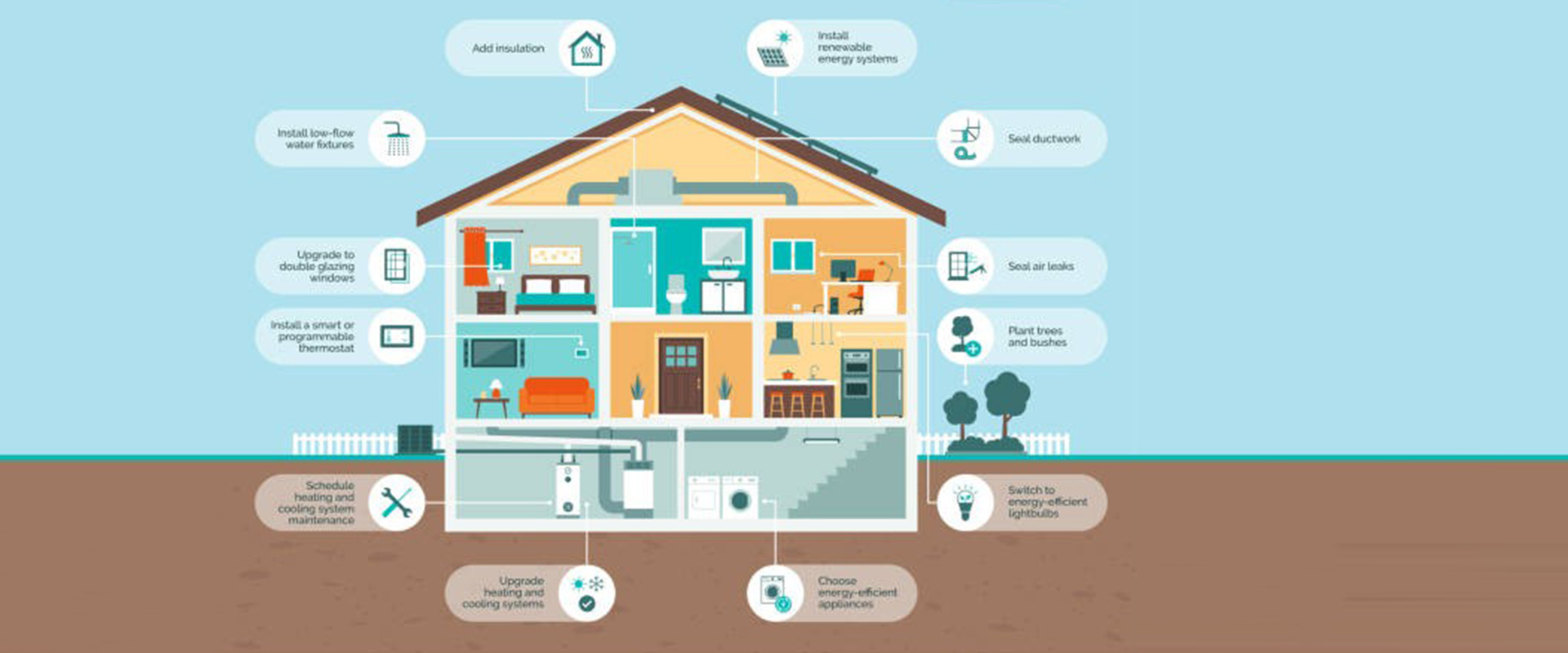
Energy-Saving Tips for Each Room in Your Home
Saving energy not only benefits the environment but also helps reduce your electricity bills. By implementing energy-saving practices room by room, you can make a significant impact. In this blog post, we will provide you with energy-saving tips for each room in your home. Let’s get started!
Living Room
- Utilize natural lighting: Open your blinds during the day to maximize natural light, reducing the need for artificial lighting.
- Use energy-efficient light bulbs: Replace traditional incandescent bulbs with energy-saving LED or CFL bulbs.
- Use power strips: Connect your electronics (TV, gaming console, etc.) to a power strip and turn it off when not in use to prevent standby power consumption.
Kitchen
- Optimize refrigerator usage: Keep the refrigerator away from heat sources, ensure proper sealing of the door, and avoid overstocking to allow proper air circulation. Keep the refrigerator door closed and set the temperature to the manufacturer’s recommended level (usually between 35-38°F). Also, ensure the coils at the back are clean.
- Efficient cooking: Match the size of the pots and pans to the burner size. Cover pots while cooking to retain heat and cook food faster.
- Energy-efficient appliances: Look for Energy Star certified appliances, such as refrigerators, dishwashers, and ovens, which consume less energy.
Bedroom
- Adjust thermostat: Lower your thermostat settings at night or use a programmable thermostat to maintain a comfortable sleeping temperature.
- Use energy-efficient bedding: Choose energy- savings blankets, comforters, and pillows made from materials like organic cotton or bamboo, which can help regulate body temperature.
- Unplug electronics: Disconnect chargers, lamps, and other devices when not in use to avoid standby power consumption.
Bathroom
- Water-saving fixtures: Install low-flow showerheads and faucets to reduce water usage without compromising comfort.
- Efficient water heating: Lower the water heater temperature to 120°F (49°C) and insulate the water heater and hot water pipes to prevent heat loss.
- Fix leaks: Regularly check for and fix any leaks in faucets, toilets, or pipes to prevent wastage of water and energy.
Home Office
- Power management: Enable power-saving settings on your computer and other office equipment, such as monitors and printers, and turn them off when not in use.
- Use natural light: Position your workspace near windows to make the most of natural light, reducing the need for artificial lighting.
- Use sleep mode: Set your computer to enter sleep or hibernate mode when idle for a certain period.
Laundry Room
- Efficient laundry practices: Wash clothes in cold water whenever suitable, as heating water consumes a significant amount of energy. Consider air-drying clothes instead of using a dryer whenever possible.
- Wash full loads: Run your washing machine and dryer with full loads whenever possible.
- Maintain the dryer: Clean the lint trap after each use, ensure proper venting to prevent air blockage, and dry consecutive loads to make use of residual heat.
- Choose energy-efficient appliances: When it’s time to replace your washer or dryer, opt for energy-saving models that use less water and electricity.
Implementing energy-saving practices room by room can have a significant impact on reducing your energy consumption and lowering utility bills. By following these tips for each room in your home, you’ll not only save energy but also contribute to a greener and more sustainable future. Start making a difference today!
